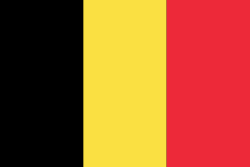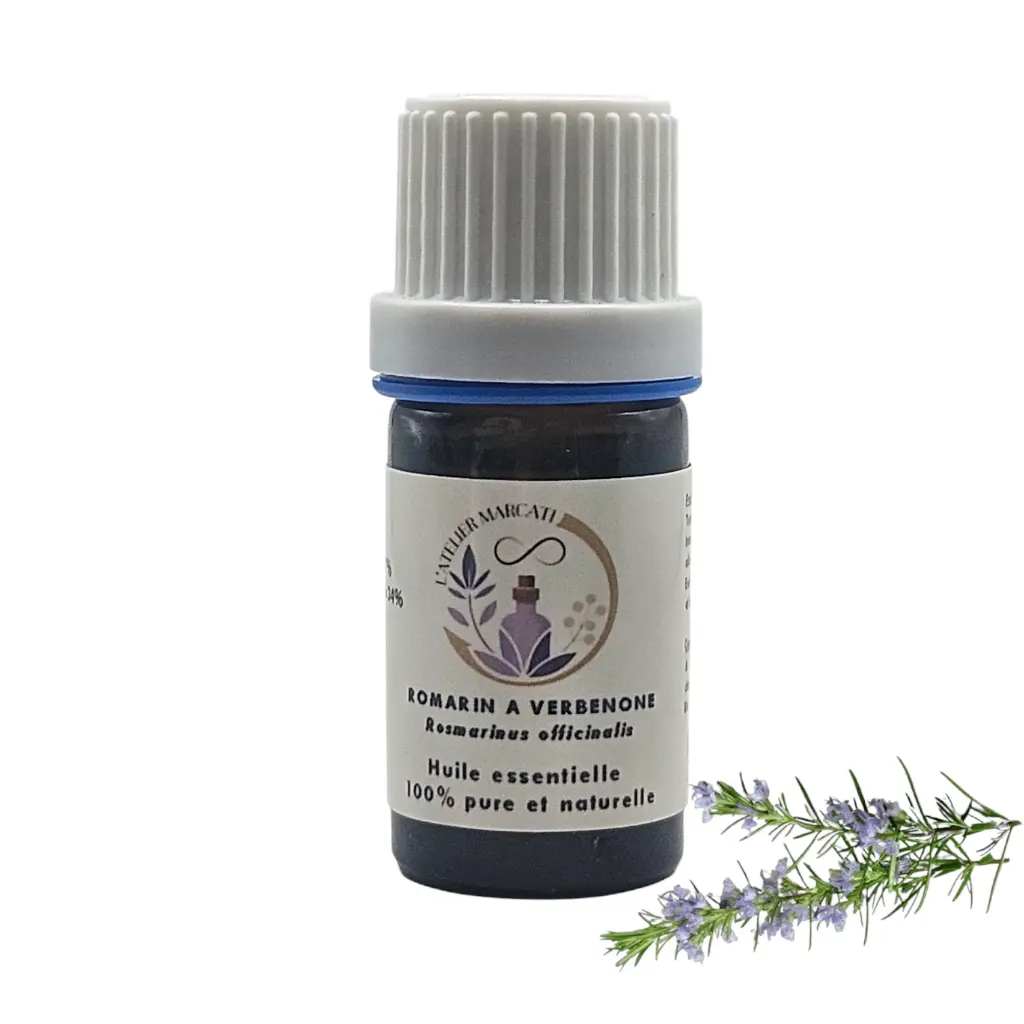Rosemary Verbenone Essential Oil
Botanical name: Rosmarinus officinalis

Chemotype and indications
Identity card
Name: Romain à Verbénone
Botanical name: Rosmarinus officinalis CT verbenone
Distilled part: Flowering branch
Botanical family: Lamiaceae
Origin: Corsica (France)
Chemical composition:
- Ketones: Borneone (1 to 15%), Verbenone (15 to 37%)
- Esters: Bornyl acetate (18%)
- Monoterpenes: Alpha-Pinene (15 to 34%), Alpha Terpinene, Beta Pinene, Terpinolene
- Monoterpenols: Borneol (traces to 7%), Linalool
- Oxides: 1.8 Cineole (traces to 20%)
- Sesquiterpenes: beta-caryophyllene
Physical properties and therapeutic indications
- Analgesic
- Anti-infective
- Antispasmodic
- Cardiac arrhythmia*
- Bactericidal
- Bartholinitis*
- Bronchitis*
- Catarrh
- Cholecystitis
- Cholera
- Cicatrizant
- Cirrhosis
- Colic
- Hepatic decongestant
- Muscle relaxant
- Difficult digestion (due to plexus tension)
- Colibacillary enterocolitis*
- Viral enterocolitis*
- Expectorant
- Viral hepatitis*
- Jaundice
- Leukorrhea
- Lipolytic*
- Mucolytic*
- Hepatic regenerator
- Pituitary-ovarian regulator
- Pituitary-testicular regulator
- Sexual (problem due to plexus tension)
- Sinusitis*
- Adrenal cortico-stimulant
- General stimulant
- Hepato-biliary stimulant*
- Venous stimulant
- Tachycardia*
- Vaginitis leukorrheic*
- Virucidal
At low doses:
- Cardiotonic
- Emmenagogue
- Hypertension
At average dose:
- Hypotension
Emotional, psychological properties and therapeutic indications
- Unties the sacral, pelvic and solar plexuses (with digestive and sexual problems)*
- Depression*
- Nervous fatigue*
- Nerve balancer (caution: effects reversed depending on the dose)
Complementary information
Danger and precaution
Toxic EO at high doses - Abortifacient - Neurotoxic
Prohibited for pregnant women, babies, children and hypersensitive liver patients
Legend: * powerful, ** very powerful; *** extremely powerful (power value for the associated pathology)
Reference and bibliographic source: Lily BAYER and Dr Hervé STAUB, (2013) "In-depth Treatise on Phyto and Aromatherapy", Ed. Grancher. p. 635.
THE INDICATIONS IN AROMATHERAPY AND THE USE OF ESSENTIAL OILS DO NOT CONSTITUTE A MEDICAL DIAGNOSIS AND DO NOT REPLACE THE ADVICE OF A DOCTOR OR MEDICAL TREATMENTS!



